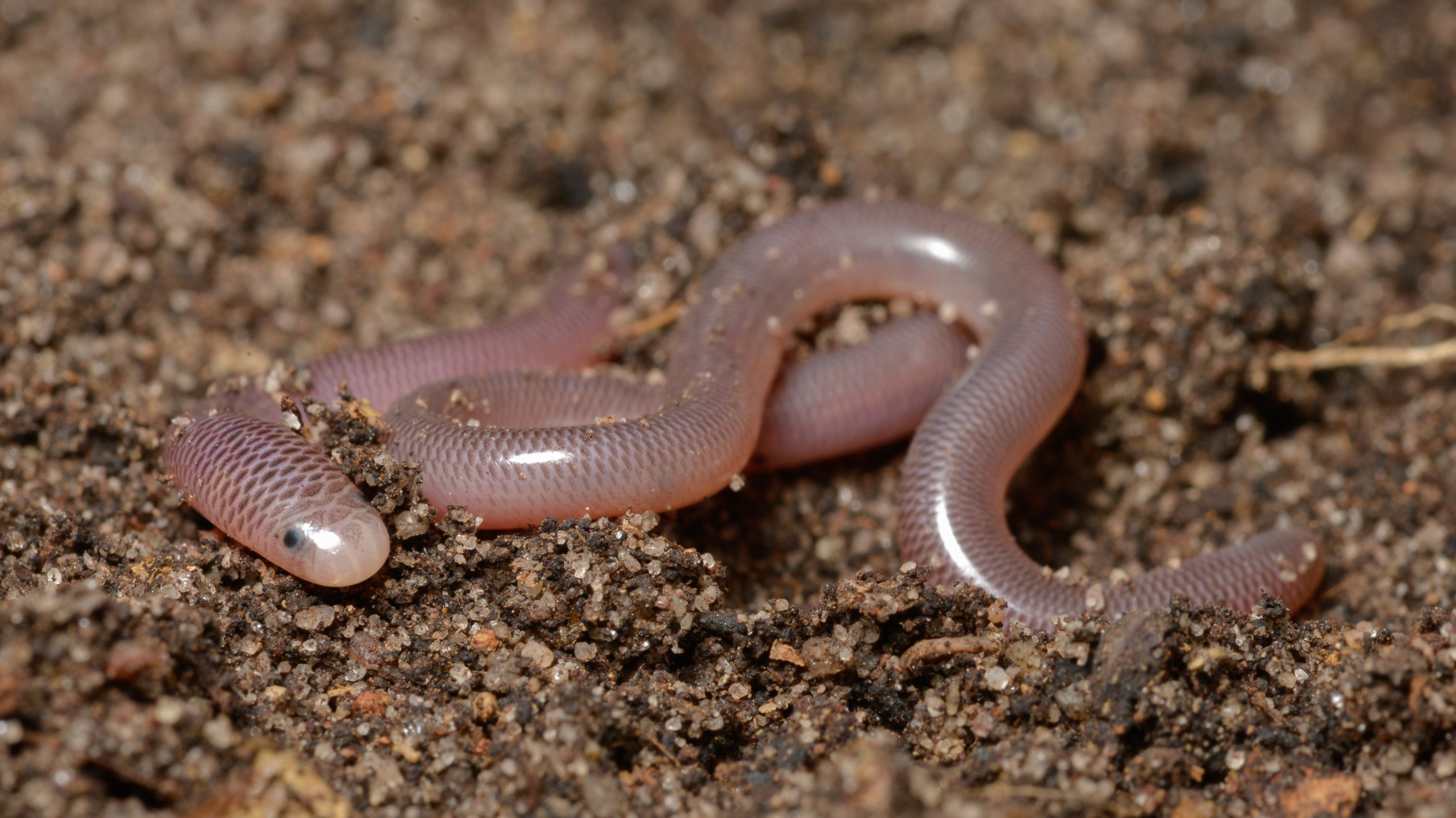New research led by a University of Alberta graduate student could lead to reimagining what early snakes might have looked like, suggesting that some of the world’s supposedly simplest snakes have a more complex evolutionary history than traditionally thought.
Snakes are broadly divided into two groups based on their feeding mechanisms: macrostomatan snakes, able to eat prey much larger than their own head, or microstomatan snakes limited to proportionally smaller prey.
“Traditionally, the group of animals called blindsnakes have played a major role in hypotheses of the origin of snakes,” said lead author Catie Strong, graduate student in the Department of Biological Sciences in the Faculty of Science. “Thought to be very similar across species, blindsnakes are often portrayed as representing a modern version of what the first snakes might have looked like. But our study shows that this is likely not the case.”
The team examined the jaw anatomy of snakes and lizards in fine detail using CT scanning techniques.
“We found five different types of microstomatan jaws, including three very distinct blindsnake lineages, each exhibiting a completely unique jaw structure and function,” said Strong. “This suggests that, rather than snakes ancestrally being quite similar to blindsnakes before diverging into the species we see today, it's more likely that blindsnakes in fact represent several distinct and highly modified evolutionary paths.”
Researchers have traditionally believed that the earliest snakes were likely small, burrowed in the ground and had a microstomatan jaw structure—all features shared with blindsnakes. However, the new research reveals a hidden diversity in blindsnake evolution that puts them further along the evolutionary tree.
“These new findings mean that the origin of snakes is likely much more complicated than is typically thought,” said Strong. “It's easy to see superficial similarities like jaw structures and inform our understanding of evolution based on this—but by going back and critically examining even so-called primitive animals like blindsnakes, it becomes obvious that evolution is often much more complicated.
“Whatever the earliest snakes looked like, our team’s findings strongly suggest that they would've looked quite different from blindsnakes.”
The study was carried out under the supervision of Michael Caldwell, professor in the Department of Biological Sciences, in collaboration with Mark Scherz, post-doctoral researcher at the University of Potsdam. Funding for the research was provided by the Natural Sciences and Engineering Research Council of Canada.
The study, “Deconstructing the Gestalt: New concepts and tests of homology, as exemplified by a re-conceptualization of ‘microstomy’ in squamates,” was published in The Anatomical Record: Advances in Integrative Anatomy and Evolutionary Biology, an official publication of the American Association for Anatomy that publishes new discoveries in the morphological aspects of molecular, cellular, systems and evolutionary biology.
